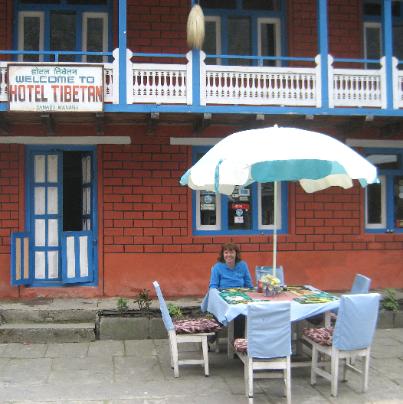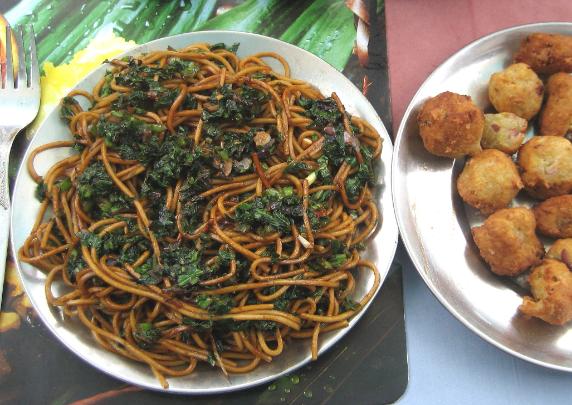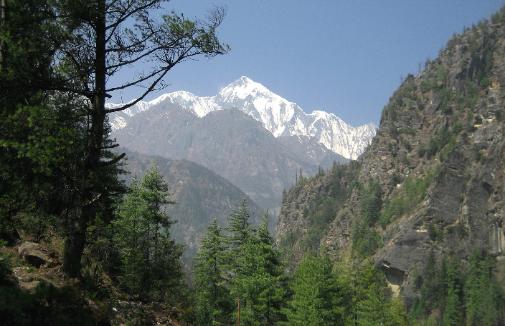
Where We Be
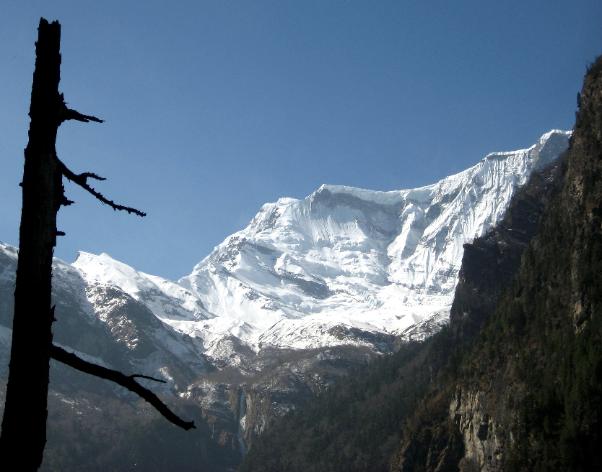

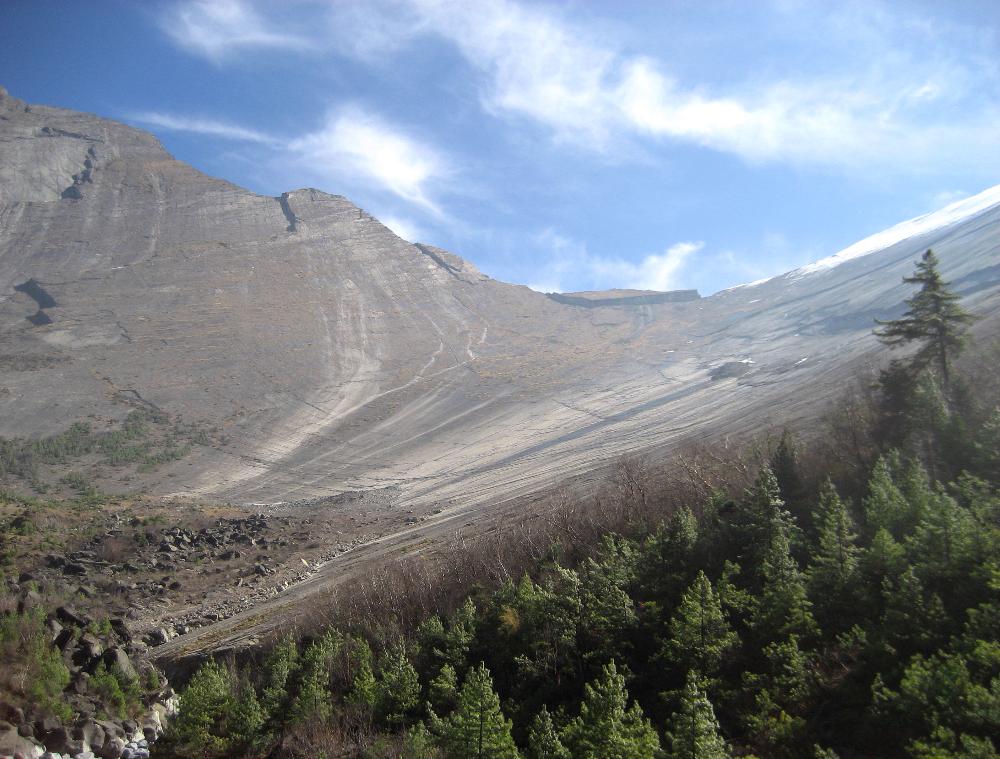
| Waiting our turn to cross the bridge. You can hear the donkey bells coming long before you see them. |
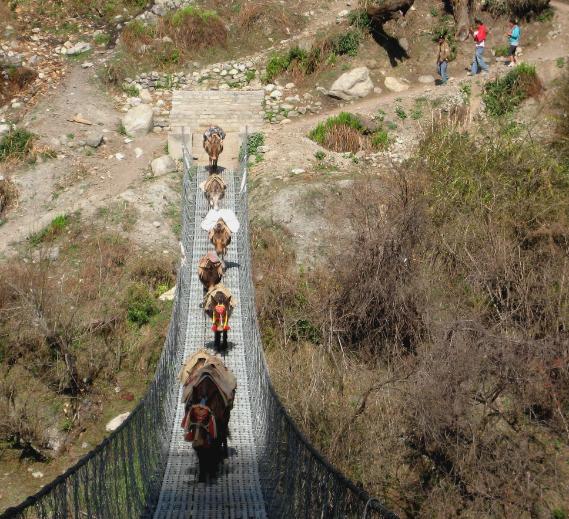
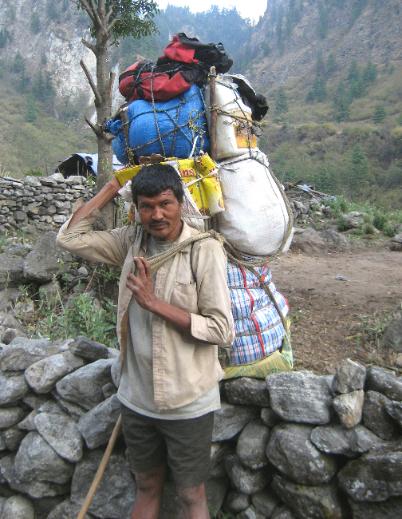

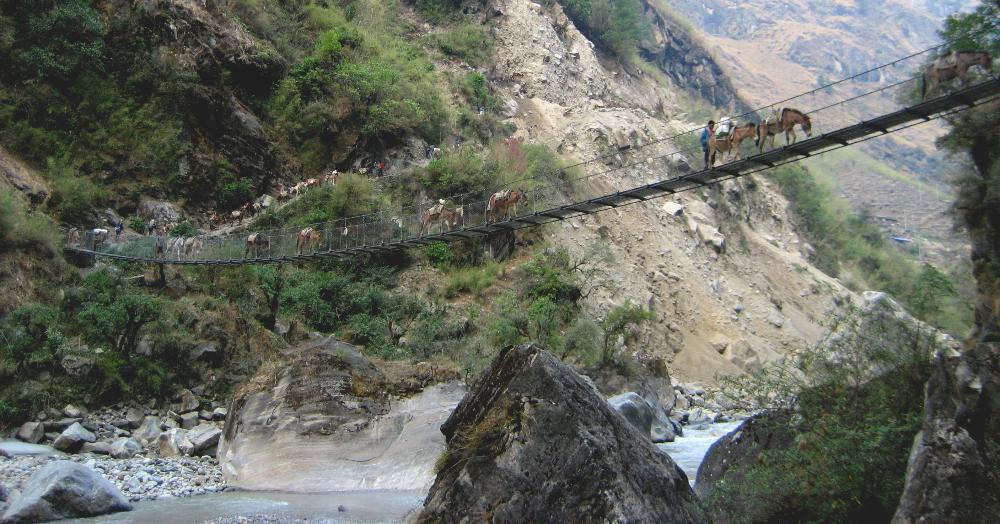
| The Himalayan scenery keeps improving the higher we go |
| A long mule train crosses a bridge on our way to Danaqyu |
| The incredible human effort going into building the road -- mostly by manual labor -- is something to behold. Here men are harnessed together to drag cables (for a suspension bridge?) up an extremely steep slope. Mules can't be used because it takes men working in unison to drag the cables up the treacherous slope. |
| Men rapidly assemble wire "cages" used to bundle rocks together. These cages can then be used to reinforce road embankments. |
| This young Nepali woman helped us across a shortcut we'll never forget |
| Long bridge over a deep chasm on the way to Danaqyu |
| Line of prayer wheels at Danaqyu |
| We stayed at the comfortable Hotel Tibetan in Danaqyu and enjoyed a tasty lunch of veg fried noodles and potato pakoda. It's assumed you'll eat meals at the lodge you're staying at because food is where they make most of their money. |
| We played a fun version of "volleyball" with a bunch of kids in Danaqyu. (We'll never know why the ball was kept covered in a plastic bag!) |
| Nepal can feel very mysterious on a misty day |
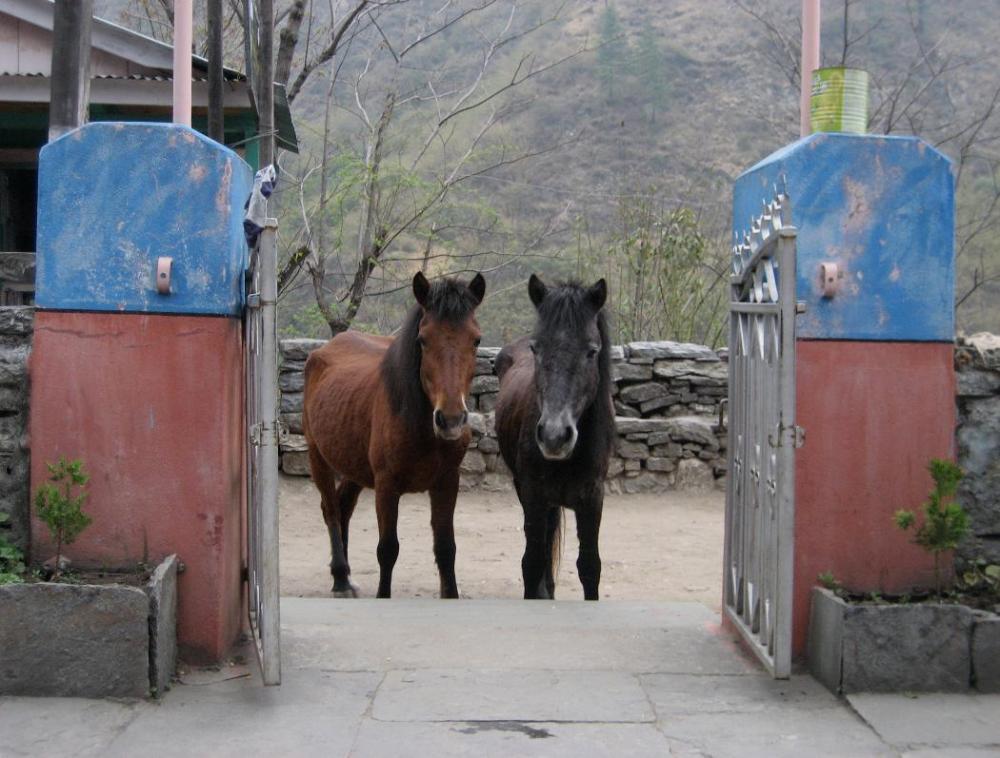
| Two horses wait at the hotel entrance, anxious for their supper! |
| Porters in Nepal carry ridiculous loads of stuff on their backs |
| A brilliant red rhododendron brightens our morning hike |
| Interesting mix of drunken trees and white-capped peaks |
| A common sight in Nepal: heavy rocks placed on top of tin roofs to keep them from blowing away |
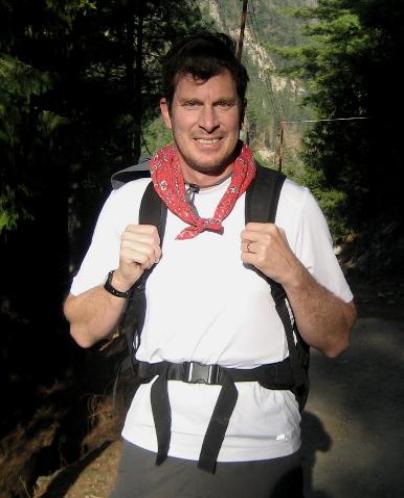
| The mountain scenery turned more dramatic near Chame (2710 m / 8943 ft) |
| Finally feeling fit by Day 6 |
| The scenery along this stretch was reminiscent of our home state of Colorado |
| Locals call this the "Gateway to Heaven" (Swarga Dwar). They believe the spirits of the deceased ascend this wall. |
| The scenery opens up and becomes drier and somewhat flatter near Pisang (3310 m / 10,923 ft) |
| Annapurna Circuit, Nepal (Days 4-6) |
| Day 4. Tal to Danaqyu |
A good three days. We felt like we started to get
our hiking legs back, and the scenery turned
more lovely the higher we climbed. Skies that
had been hazy up till now turned blue, and the
white-capped peaks of the Himalayas began to
show themselves more dramatically.
But everywhere we saw signs of road-building.
A “train” of a dozen men pulled cables up an
extremely steep slope using head harnesses.
Long mule trains carried supplies up and down.
Artificial landslides occurred as precariously
dangling Nepali workers tossed boulders over
the sides of cliffs. In the distance we could hear
jackhammers and explosives. This is what we
imagine road construction would have been
like a hundred years ago in the Wild West.
We felt like we had one of our most genuine
bonding moments with local Nepalis in the town
of Danaqyu. After dinner we went for a stroll
and came upon a group of young girls playing
“volleyball” without a net. For some reason the
ball was wrapped in a black plastic bag. One girl
invited us to play using hand signals and we
joined in. Eventually the girl's mother shrugged,
laughed, and joined in too. Before long we had
ten local people playing “volleyball” with us!
our hiking legs back, and the scenery turned
more lovely the higher we climbed. Skies that
had been hazy up till now turned blue, and the
white-capped peaks of the Himalayas began to
show themselves more dramatically.
But everywhere we saw signs of road-building.
A “train” of a dozen men pulled cables up an
extremely steep slope using head harnesses.
Long mule trains carried supplies up and down.
Artificial landslides occurred as precariously
dangling Nepali workers tossed boulders over
the sides of cliffs. In the distance we could hear
jackhammers and explosives. This is what we
imagine road construction would have been
like a hundred years ago in the Wild West.
We felt like we had one of our most genuine
bonding moments with local Nepalis in the town
of Danaqyu. After dinner we went for a stroll
and came upon a group of young girls playing
“volleyball” without a net. For some reason the
ball was wrapped in a black plastic bag. One girl
invited us to play using hand signals and we
joined in. Eventually the girl's mother shrugged,
laughed, and joined in too. Before long we had
ten local people playing “volleyball” with us!
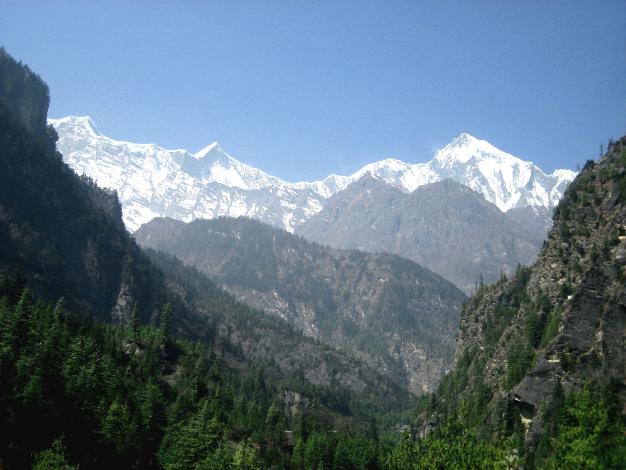
| A Crazy Shortcut |
In the midst of all the road construction we reached a jumble of
rocks and weren't sure which way the trail went. We saw a young
woman ahead of us and asked, “Manang?” (The next big town.)
She nodded and started walking, looking back to see if we were
following. At first we thought she was following the main trail, but
the further we got the more we realized this was a shortcut used
by locals only -- because there was no way a mule or any sane
person carrying a backpack would do this.
I asked again, “Manang?” just to be sure. She nodded and smiled
and waved me ahead of her. Things only got scarier from there.
My pack scraped against an overhanging rock so I had to bend
over while trying to inch forward at the same time. Three steps
where the dirt shifted beneath my feet next to a deadly dropoff
had me seriously freaked out. But there was no turning back.
Meanwhile the young woman had taken Robin by the hand and,
step by step, was leading her sidewise across the same perilous
stretch. At the spot where I had been most frightened she told
Robin, “Slowly, slowly” and even offered to swap packs -- but
Robin made it! One, two, three steps and she was there. Phew!
At the far end the woman pointed way up and said "Trail." Far
above we could see a footbridge and realized we'd saved our-
selves quite a bit of climbing -- but at no small risk to our lives!
Afterwards we found ourselves laughing in that way you do when
you've done something really stupid but survived anyway.
rocks and weren't sure which way the trail went. We saw a young
woman ahead of us and asked, “Manang?” (The next big town.)
She nodded and started walking, looking back to see if we were
following. At first we thought she was following the main trail, but
the further we got the more we realized this was a shortcut used
by locals only -- because there was no way a mule or any sane
person carrying a backpack would do this.
I asked again, “Manang?” just to be sure. She nodded and smiled
and waved me ahead of her. Things only got scarier from there.
My pack scraped against an overhanging rock so I had to bend
over while trying to inch forward at the same time. Three steps
where the dirt shifted beneath my feet next to a deadly dropoff
had me seriously freaked out. But there was no turning back.
Meanwhile the young woman had taken Robin by the hand and,
step by step, was leading her sidewise across the same perilous
stretch. At the spot where I had been most frightened she told
Robin, “Slowly, slowly” and even offered to swap packs -- but
Robin made it! One, two, three steps and she was there. Phew!
At the far end the woman pointed way up and said "Trail." Far
above we could see a footbridge and realized we'd saved our-
selves quite a bit of climbing -- but at no small risk to our lives!
Afterwards we found ourselves laughing in that way you do when
you've done something really stupid but survived anyway.
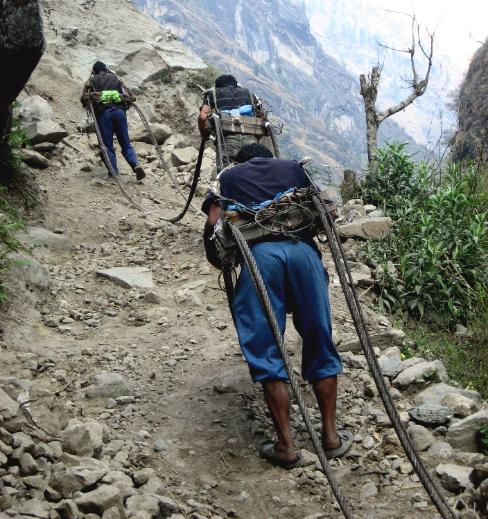
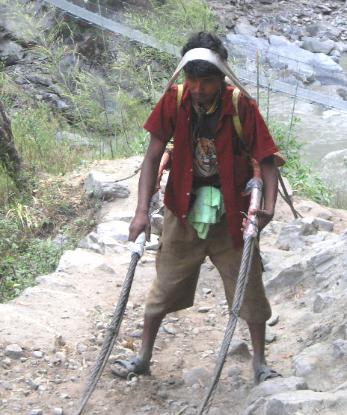
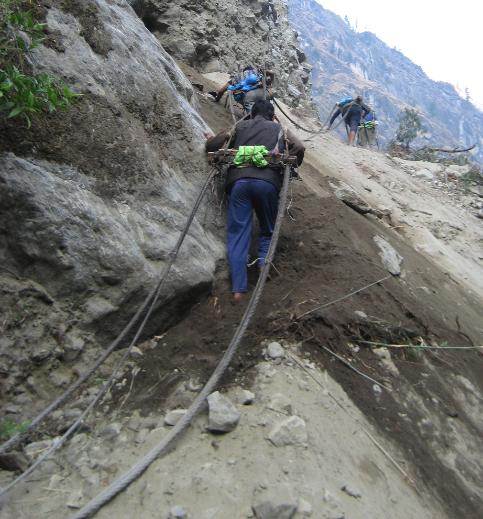
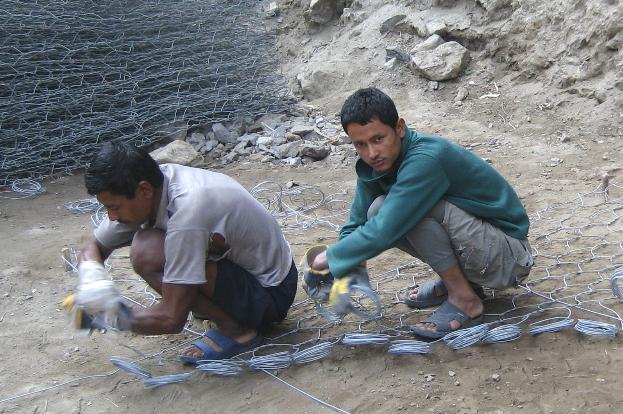
| Hikers may not want the road but most locals do -- and they're working hard for it |
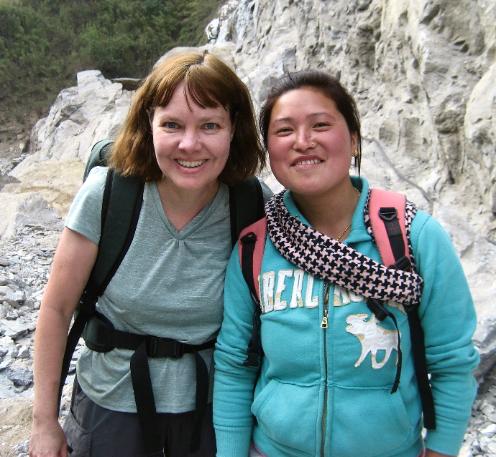
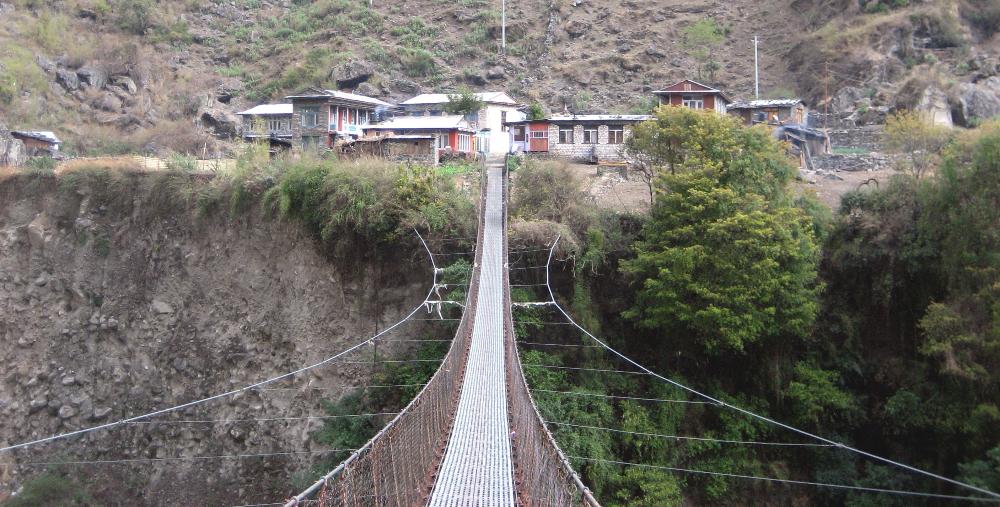
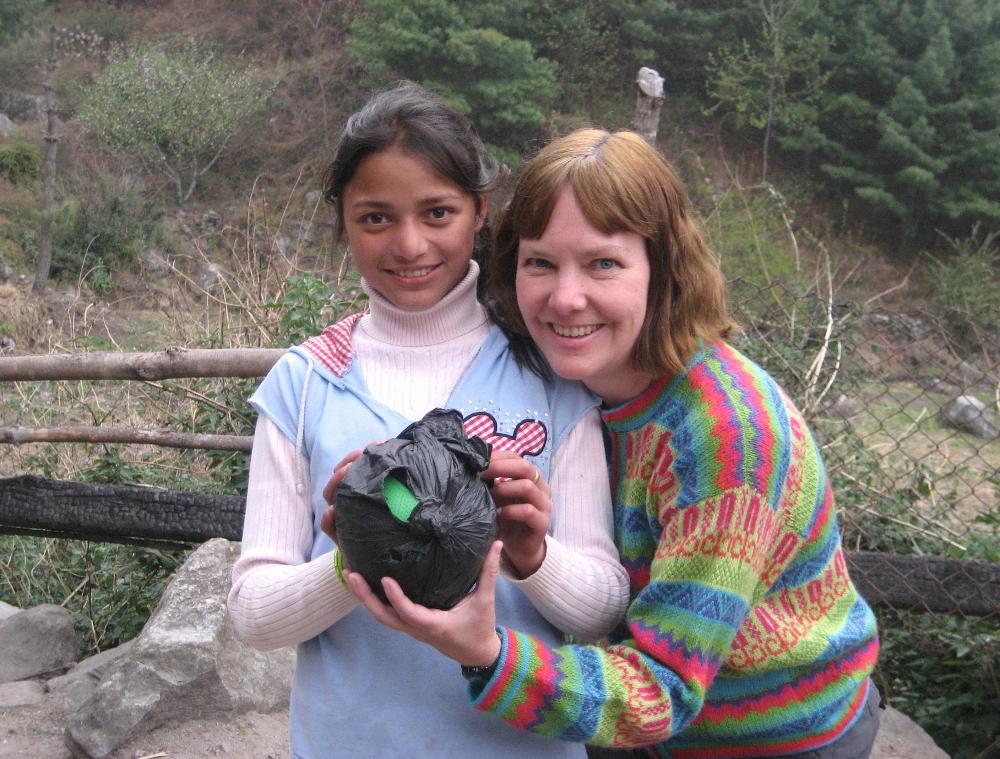
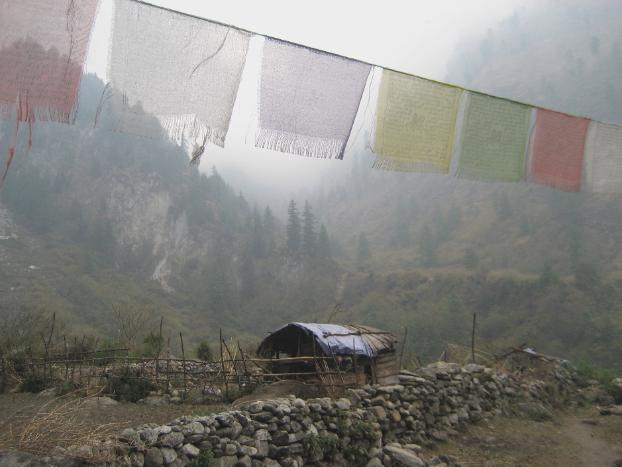
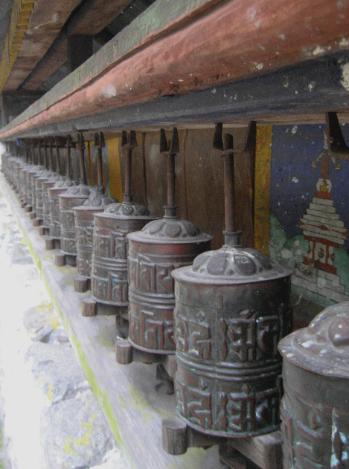
| Day 5. Danaqyu to Chame |
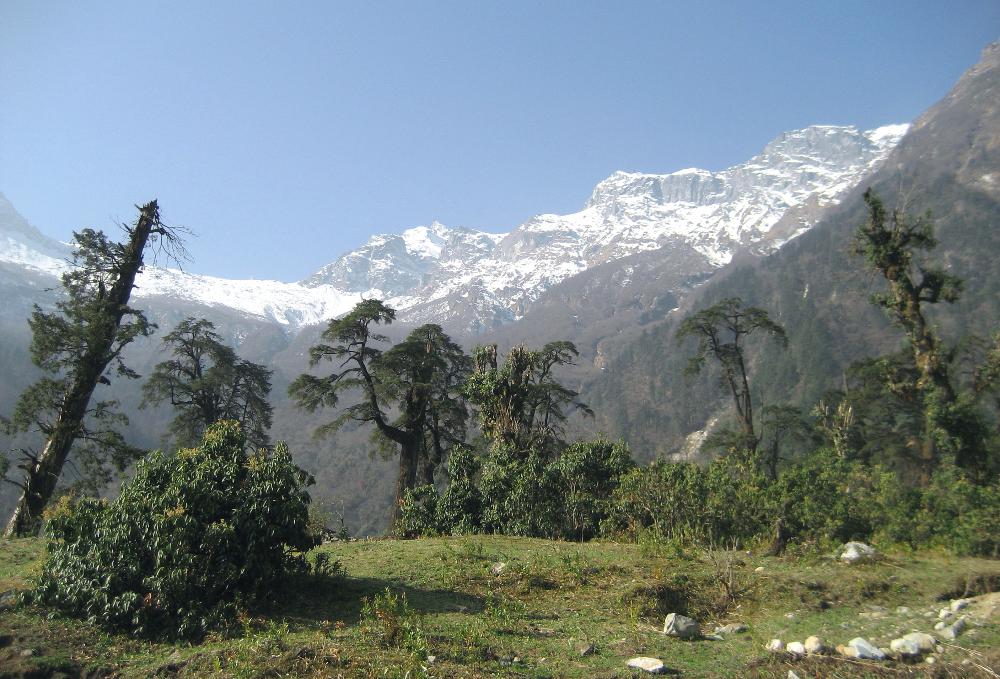
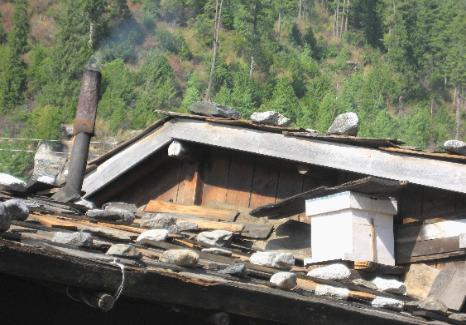
| Day 6. Chame to Pisang |
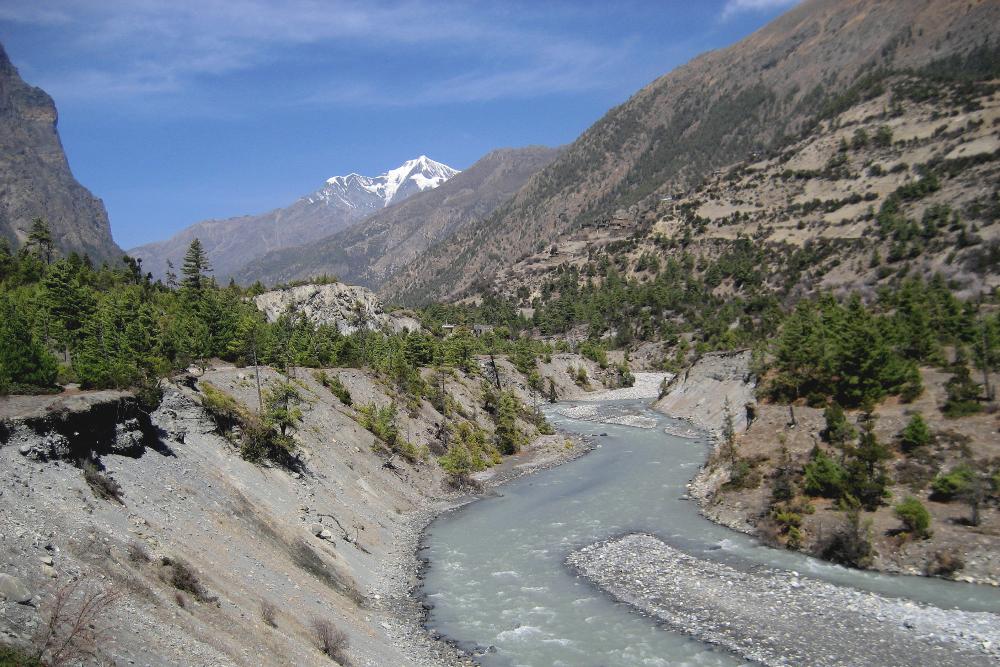
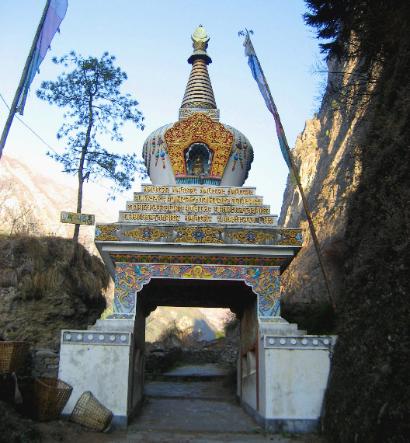
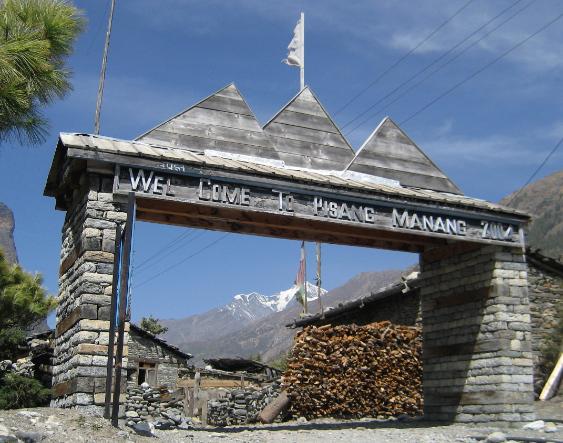
| Sometimes the entrance gates are more dramatic than the towns themselves! |
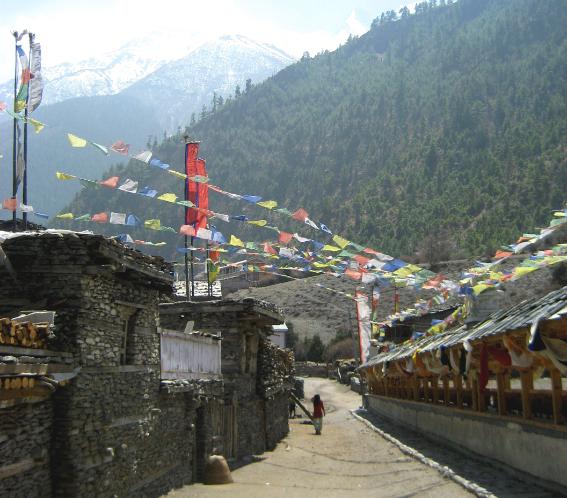
| Arriving in Pisang |
